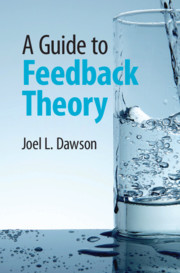
Feedback dynamics is a topic that many engineers feel they should know. Feedback loops appear everywhere in engineering and science, and a command of feedback greatly increases one’s ability to design useful, robust machines.
But it is also true that regardless of where you are in your engineering career, you have plenty of reason not to understand feedback control. If you are an undergraduate, these years may represent a peak of your facility with calculus, differential equations, transform methods, and the like, and so you are well-equipped to pass the gauntlet of exams that mark that period. Yet your lack of experience makes it tough to organize all of the concepts into a hierarchy of importance. It is no surprise, then, that you may have difficulty remembering what you learn. On the other hand, if you are a practicing engineer with long experience, you may have become proficient in your job in part by jettisoning the mathematical gymnastics you learned in college. It remains stubbornly true, however, that a deep understanding (both analytical and conceptual) would better equip you to break with design tradition when a complex problem demands.
Fine. Suppose you find yourself in one of these two camps, or somewhere in between, and decide that you are going to Do Something About It. You will embark on a program of self-study, and satisfy your curiosity. What then?
One approach is to launch into the archive of research papers, and make sense of what you find. But feedback control is a very old topic, and at this point papers tend to address problems that are specialized and complicated. It is true that most authors at least make a wave toward practical application, but it remains that a theoretical step tends to be their priority. If you are not already participating in the conversation that the paper engages, understanding that paper may require going back and studying carefully some or all of its citations, and then the citations of those citations, etc.. The research paper route is a steep hill to climb.
Another approach is to seek out one of the many excellent college textbooks on control theory. This may seem a gentler way. However, such textbooks are routinely 500 dense pages or more, and again assume a facility with linear system analysis that many lack. So it is not enough to sort through this one book: you must now seek out one or more books covering the math and methods that you may have forgotten or that you use only awkwardly.
A Guide to Feedback Theory threads this frustrating needle. I have strived to put, in a single slim volume, enough of all of the basics for the reader to get a satisfying analytical and conceptual grounding in feedback theory’s essence. Whether your aim from here is to dive deeper into control theory, innovate in your application, or both, my hope is for this book to be a great help.

Latest Comments
Have your say!